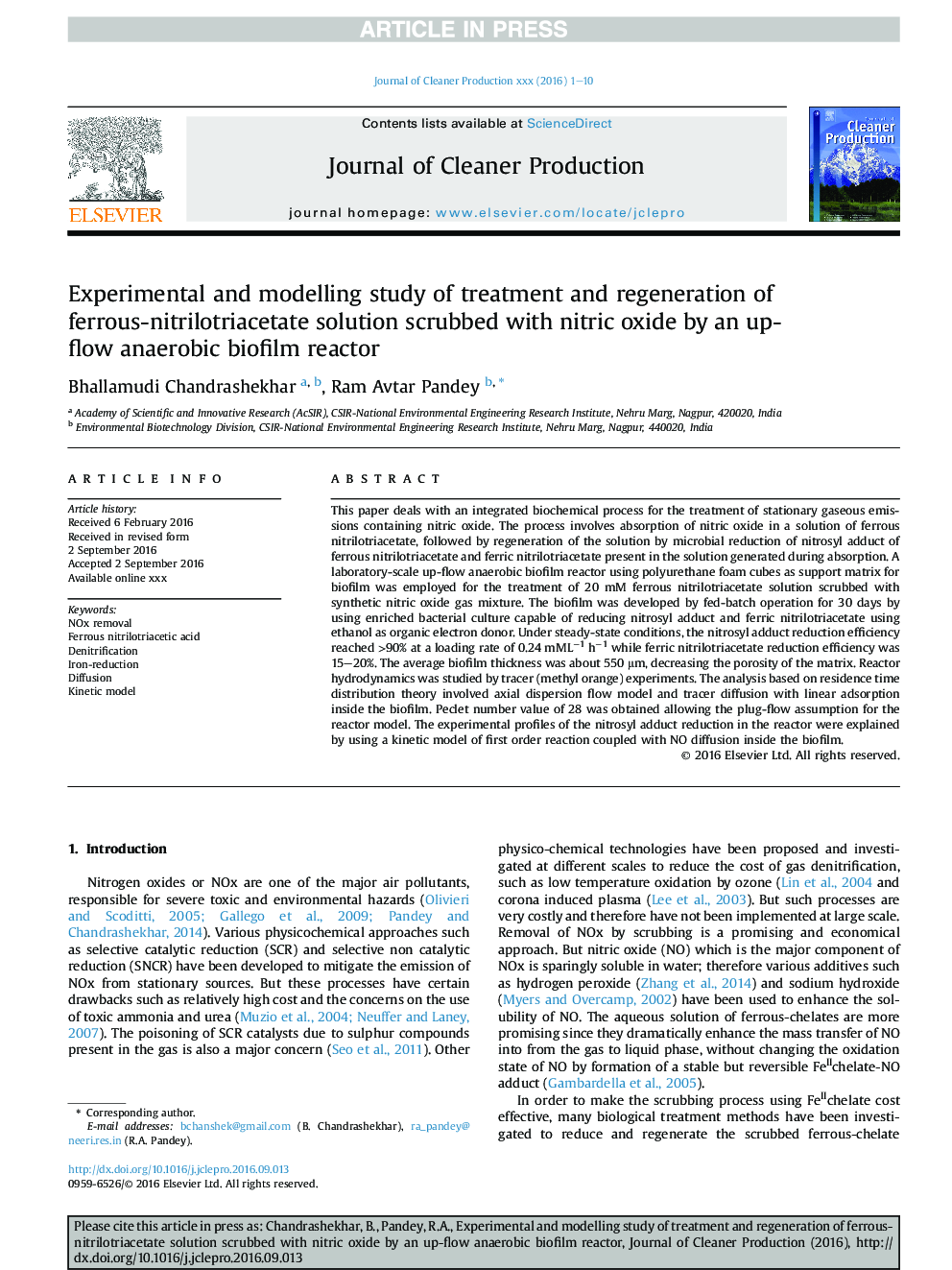| Article ID | Journal | Published Year | Pages | File Type |
|---|---|---|---|---|
| 5479704 | Journal of Cleaner Production | 2017 | 10 Pages |
Abstract
This paper deals with an integrated biochemical process for the treatment of stationary gaseous emissions containing nitric oxide. The process involves absorption of nitric oxide in a solution of ferrous nitrilotriacetate, followed by regeneration of the solution by microbial reduction of nitrosyl adduct of ferrous nitrilotriacetate and ferric nitrilotriacetate present in the solution generated during absorption. A laboratory-scale up-flow anaerobic biofilm reactor using polyurethane foam cubes as support matrix for biofilm was employed for the treatment of 20 mM ferrous nitrilotriacetate solution scrubbed with synthetic nitric oxide gas mixture. The biofilm was developed by fed-batch operation for 30 days by using enriched bacterial culture capable of reducing nitrosyl adduct and ferric nitrilotriacetate using ethanol as organic electron donor. Under steady-state conditions, the nitrosyl adduct reduction efficiency reached >90% at a loading rate of 0.24 mMLâ1 hâ1 while ferric nitrilotriacetate reduction efficiency was 15-20%. The average biofilm thickness was about 550 μm, decreasing the porosity of the matrix. Reactor hydrodynamics was studied by tracer (methyl orange) experiments. The analysis based on residence time distribution theory involved axial dispersion flow model and tracer diffusion with linear adsorption inside the biofilm. Peclet number value of 28 was obtained allowing the plug-flow assumption for the reactor model. The experimental profiles of the nitrosyl adduct reduction in the reactor were explained by using a kinetic model of first order reaction coupled with NO diffusion inside the biofilm.
Related Topics
Physical Sciences and Engineering
Energy
Renewable Energy, Sustainability and the Environment
Authors
Bhallamudi Chandrashekhar, Ram Avtar Pandey,
